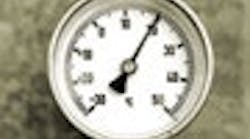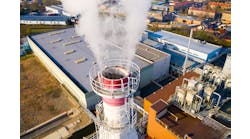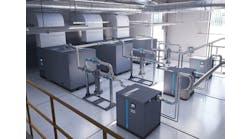Last month, Part 1 (http://www.chemicalprocessing.com/articles/2009/034.html) addressed the relationship between weight and volume of air, explained how to reduce ambient conditions to standard conditions and explored the performance differences between compressor types.Another potential rule of dumb says that every 1 psig increase in pressure changes the input power by 0.5%.Therefore, the thinking goes, “If I reduce the pressure by 10 psig at the compressor discharge, I’ll get a 5% decrease in the input power required.” There are some limitations you might not be aware of.This only applies to positive-displacement units, not dynamic units (Table 1). The net effect on a centrifugal discharge pressure change (not including any unloading controls) is machine-specific and you must refer to its performance curve. However, on many commercial units at higher pressures, the flow (scfm) drops and at lower pressure the flow increases; usually at the same or a similar input power. This effect generally covers a relatively narrow operating band.To read the rest of this article from Plant Services, visit: http://www.plantservices.com/articles/2009/025.html

Latest from Air (Energy)
Latest from Air (Energy)
Sponsored Content

